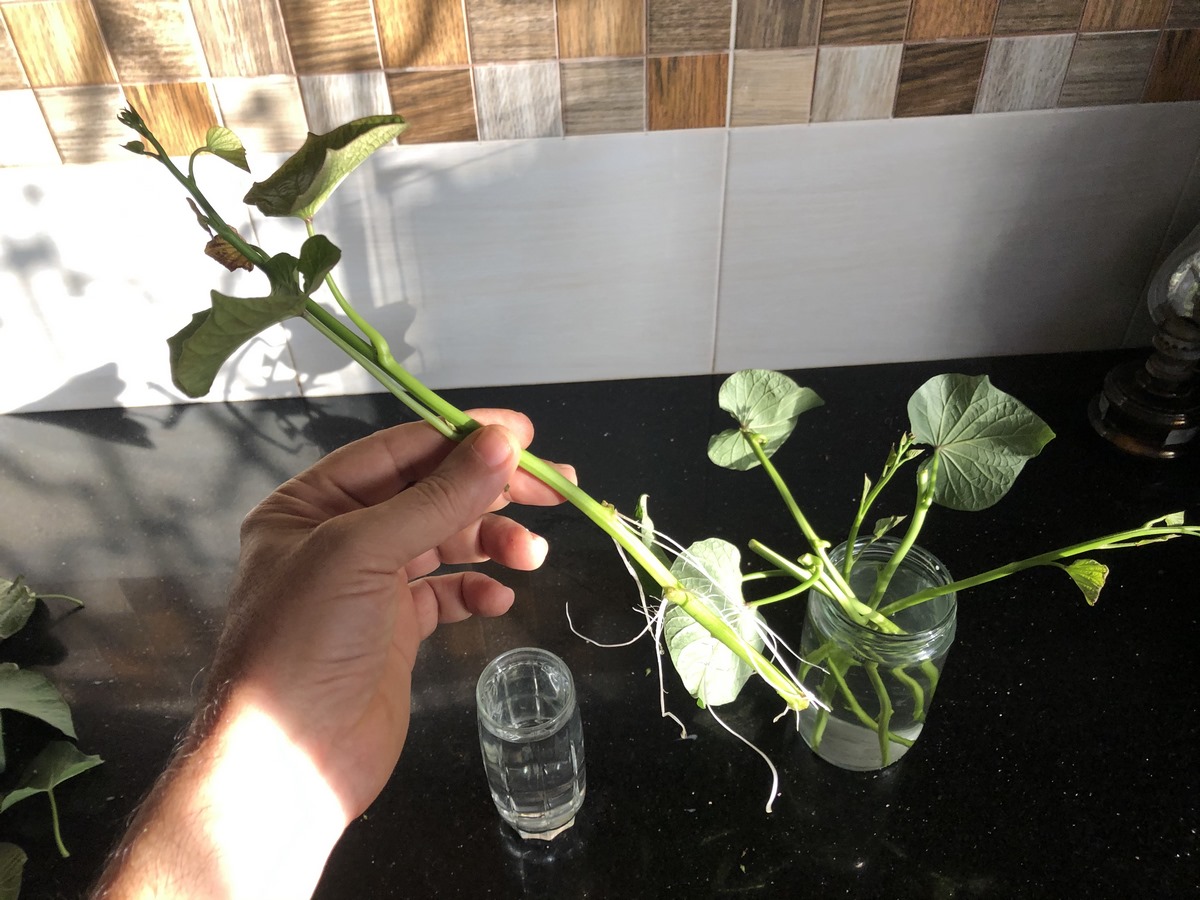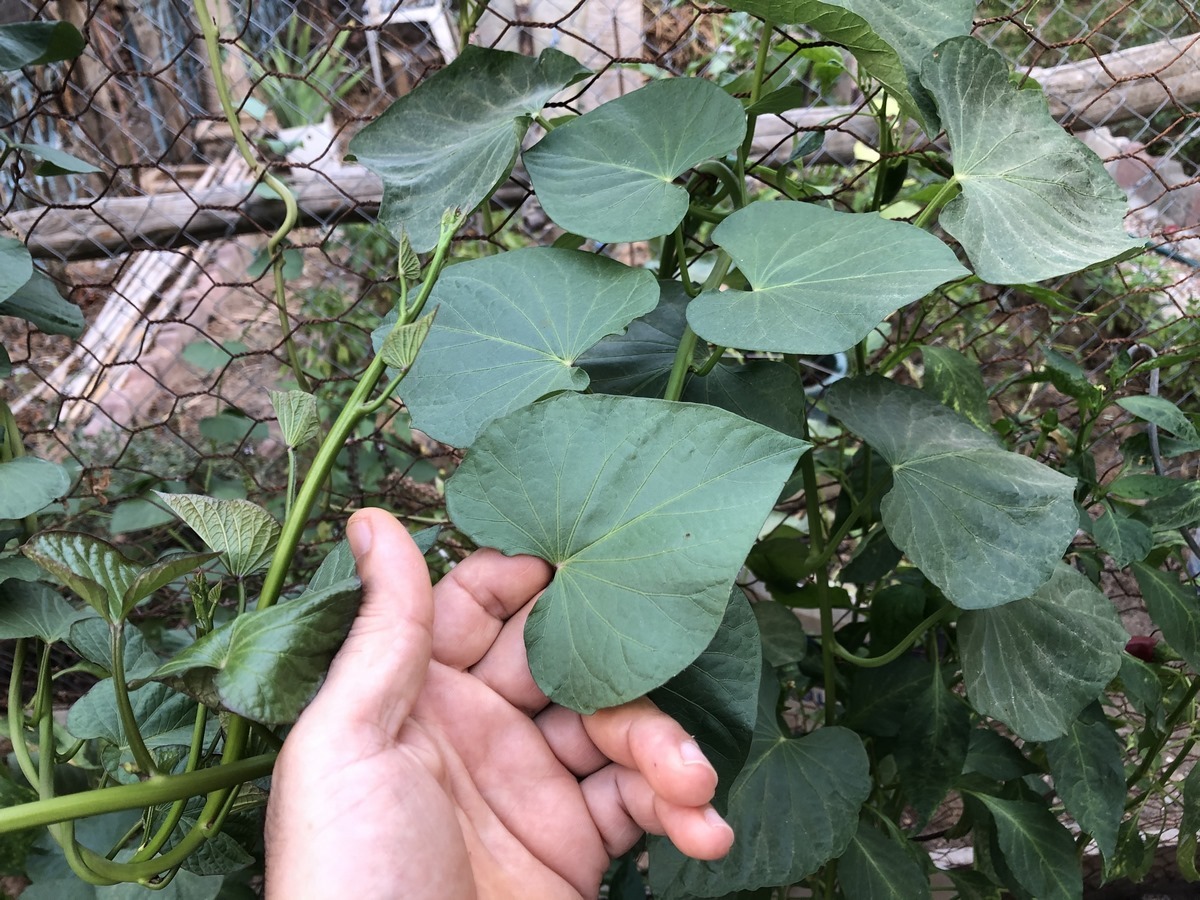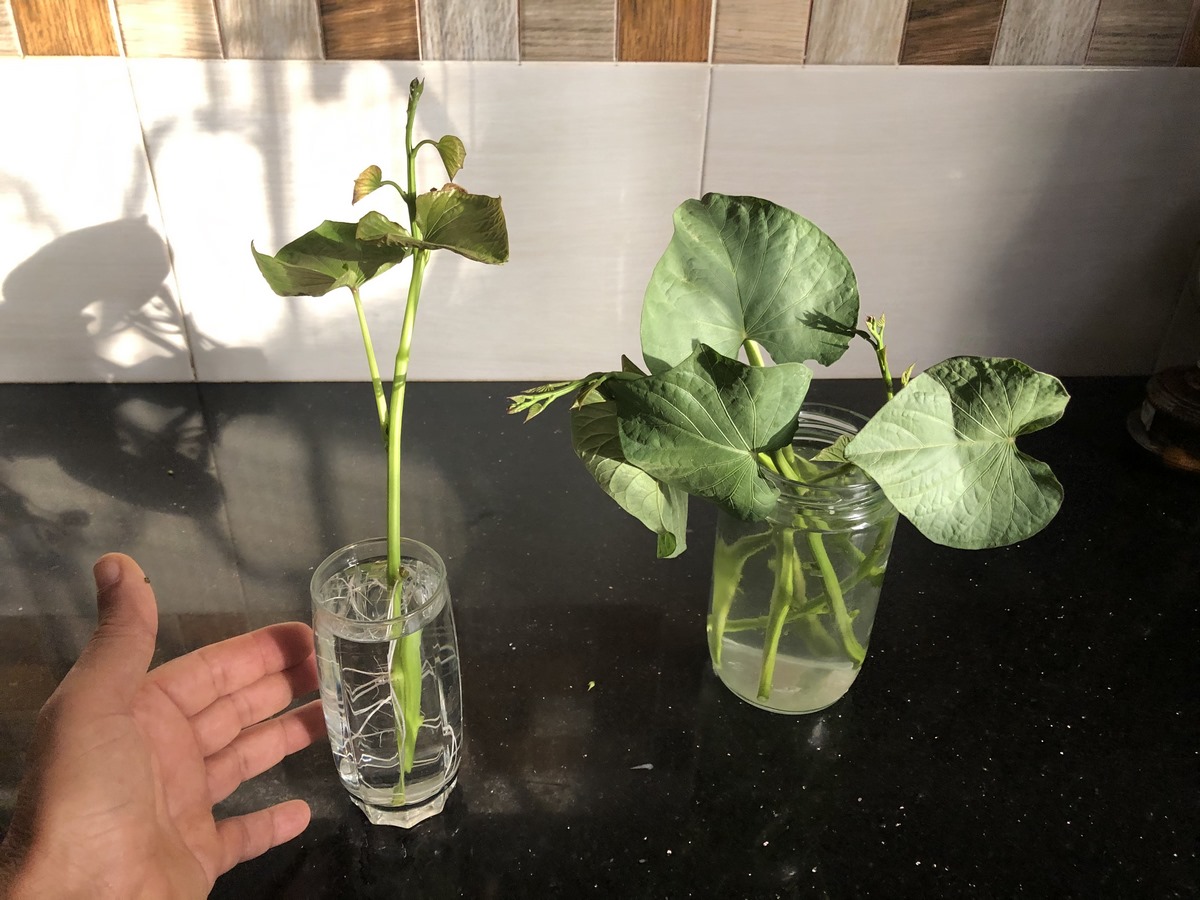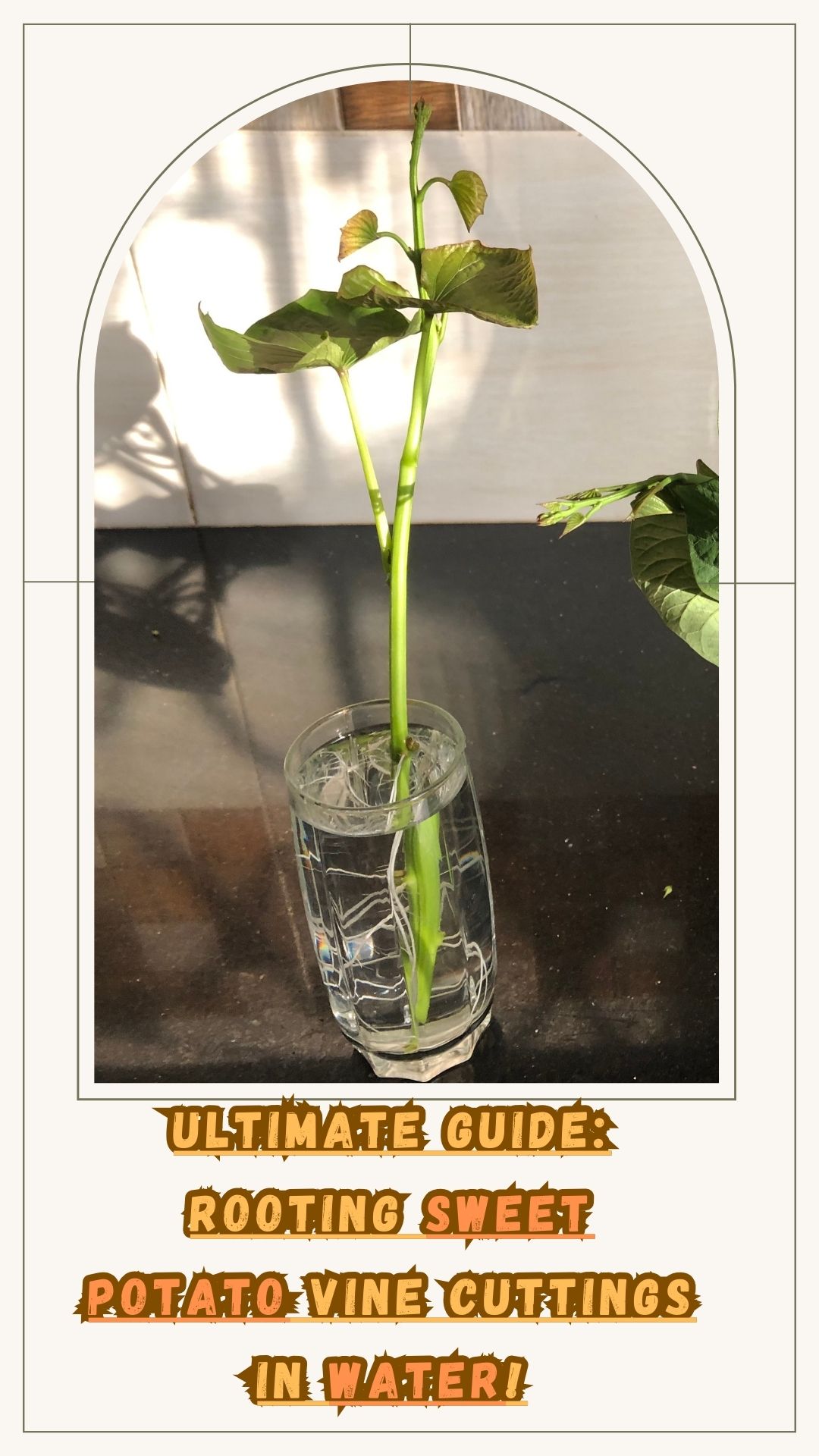Growing sweet potato vine cuttings in water offers many benefits. This technique is cost-effective and allows you to increase your plant collection by creating multiple plants from a single parent plant. It also allows for easy monitoring of root growth and ensures the health of the new plants. Water propagation is especially great for beginners as it doesn't require much resources or expertise.

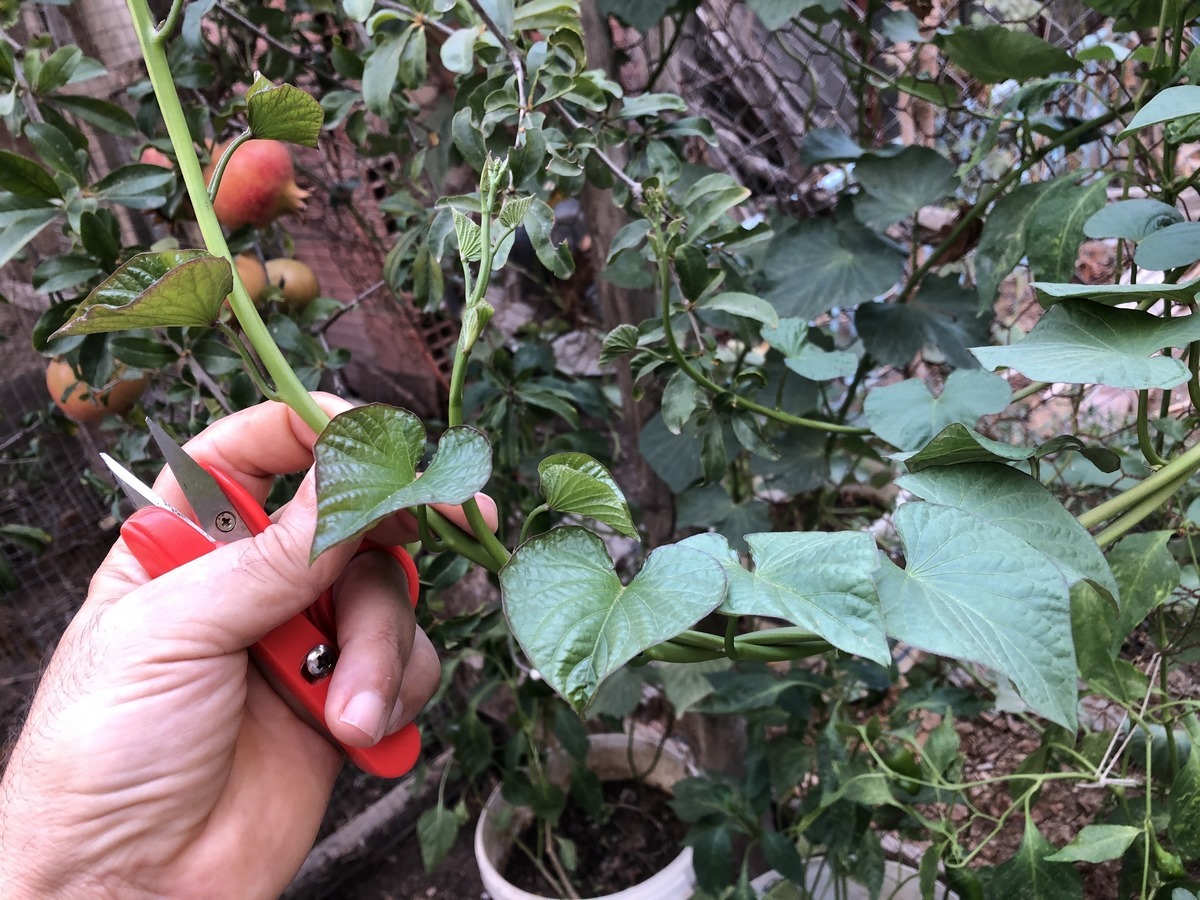
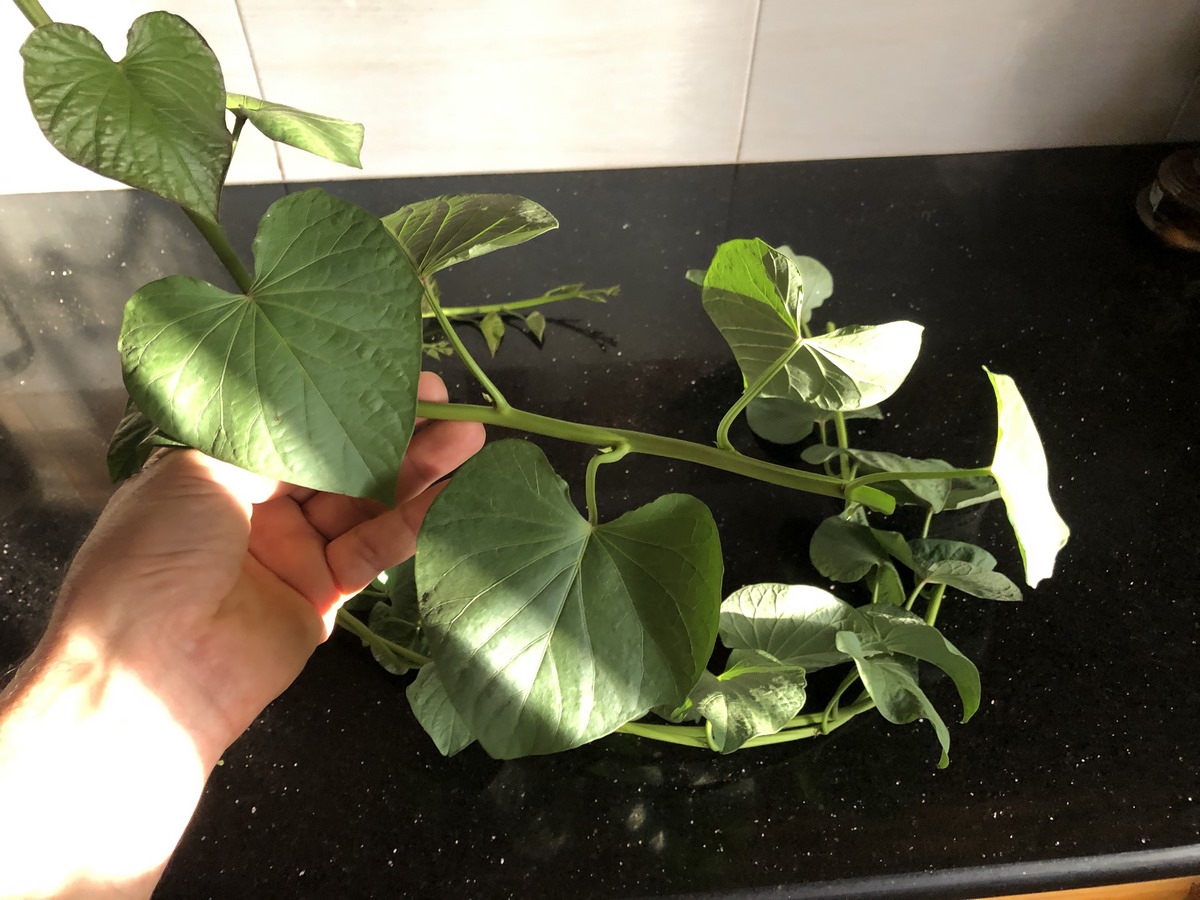
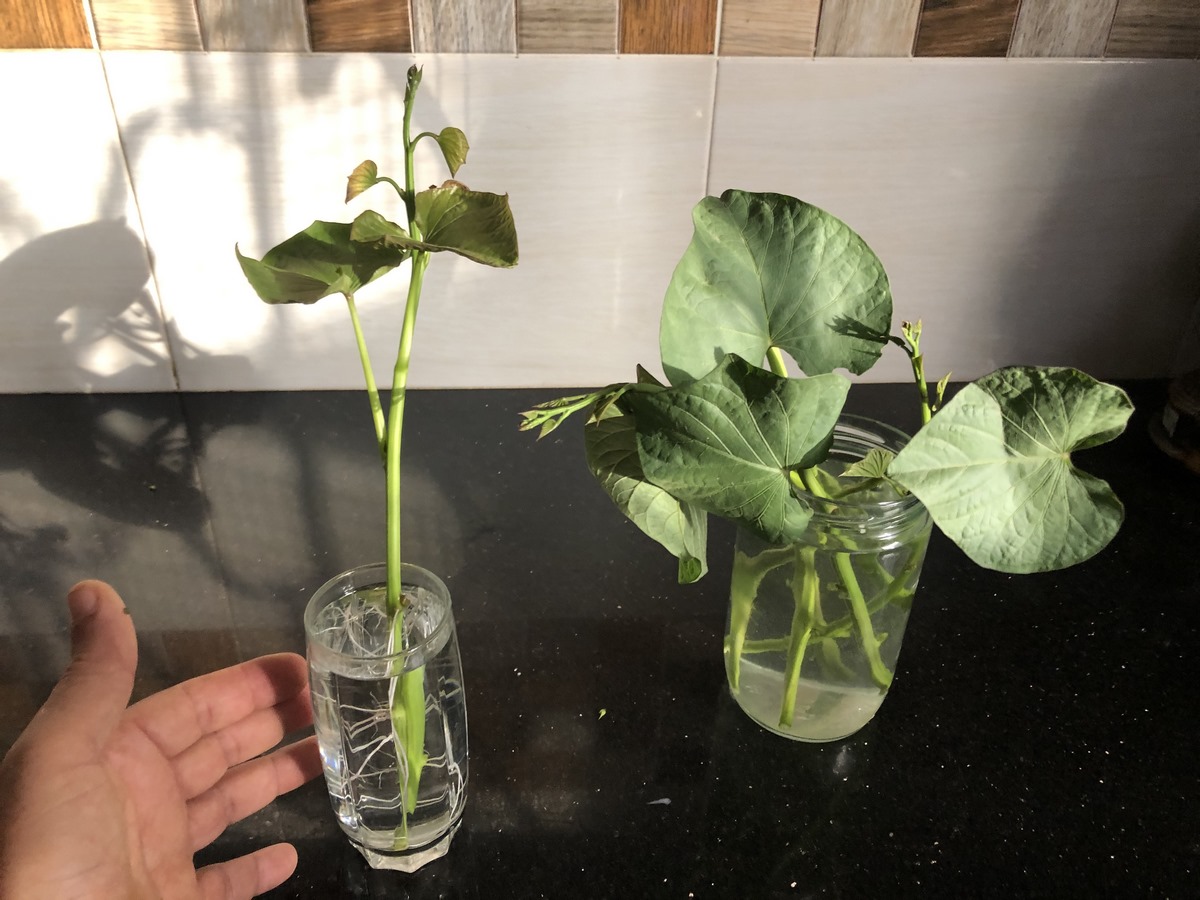
Overview of the Process To successfully root sweet potato vine cuttings in water, begin by selecting healthy cuttings from the parent plant. Place these cuttings in a container filled with water, making sure that the nodes where roots will develop are fully submerged. Regularly change the water to prevent stagnation and the growth of mold. Keep the cuttings in a well-lit area with indirect sunlight and observe as roots gradually emerge. Once the roots are well-established, transplant the cuttings into soil for further growth. Rooting sweet potato vine cuttings in water provides a satisfying and enjoyable experience as you witness the growth and development of new plants from start to finish. Simply follow the steps outlined in this guide for a successful propagation process.
Gathering Supplies
Materials Needed:
- Healthy sweet potato vine cuttings
- Clean container with water
- Scissors or shears for taking cuttings
- Bright, indirect light location for growing cuttings
- Soil (for transplanting rooted cuttings)
Where to Purchase Supplies:
Sweet Potato Vine Cuttings: You can gather cuttings from your existing sweet potato plant or buy them from a local nursery or garden center.
Container: Any clean container that can hold water will suffice. Consider using glass or clear plastic containers to monitor root growth easily.
Scissors or Shears: Available at hardware stores, gardening centers, or online retailers.
Soil: Garden centers, home improvement stores, or online retailers offer a variety of soil options for transplanting rooted cuttings.
Alternative Options:
Container: Reuse glass jars, plastic bottles, or any other suitable containers you have at home.
Rooting Hormone: Some gardeners prefer to root cuttings without using rooting hormone, relying on the natural rooting process.
Soil: You can also use a homemade potting mix or compost for transplanting the rooted cuttings.
Preparing the Vine Cuttings
Selecting Healthy Vine Cuttings:
- Choose vine cuttings that are about 4-6 inches long.
- Select cuttings with at least one or two leaf nodes, as this is where roots will develop.
- Ensure the cuttings are healthy, free from pests or diseases, and come from a vigorous part of the plant.
Proper Trimming Techniques:
Use clean, sharp scissors or shears to cut the vine at a 45-degree angle just below a leaf node.
Remove any leaves on the lower half of the cutting to prevent them from being submerged in water and potentially rotting.
Trim any excess foliage to reduce water loss through transpiration and encourage root development.
Water Propagation Process
Step-by-Step Instructions:
- Fill a clean container with room temperature water, ensuring that the water level is sufficient to submerge the nodes of the cuttings.
- Place the prepared vine cuttings in the water, making sure the leaf nodes are below the water surface.
- Position the container in a bright location with indirect sunlight to encourage root growth.
- Monitor the water level regularly and top up as needed to keep the nodes submerged.
- Change the water every few days to prevent stagnation and maintain oxygen levels for healthy root development.
Tips for Maintenance:
Trim any decaying or yellowing leaves to prevent mold growth.
Use a transparent container to observe root growth easily.
Avoid placing the container in direct sunlight, as it may lead to algae growth.
Maintain consistent water levels and temperature for optimal rooting success.
If using rooting hormone, dip the cuttings in the hormone before placing them in water for enhanced root development.
By following these steps and tips, you can successfully root sweet potato vine cuttings in water and enjoy watching them grow into thriving plants.
Monitoring and Care
Monitoring Root Growth and Progress:
Root Development: Check the cuttings regularly for signs of root growth. Look for white, healthy roots emerging from the leaf nodes.
Growth Indicators: New leaf growth or increased turgidity in the leaves indicates successful root development.
Root Health: Ensure the roots are white and firm, avoiding any mushy or discolored roots that may indicate rot.
Ensuring Cutting Health During Rooting:
Water Levels: Maintain consistent water levels to keep the nodes submerged and promote root growth.
Light Exposure: Provide bright, indirect light to encourage photosynthesis and overall plant health.
Temperature: Keep the rooting area at a moderate temperature, avoiding extreme heat or cold.
Prevent Pests: Inspect the cuttings for any signs of pests and take appropriate measures if necessary.
Nutrient Supply: Consider adding a diluted liquid fertilizer once roots have formed to support growth.
Troubleshooting Tips:
Yellowing Leaves: Trim any yellowing leaves to prevent rot and maintain plant health.
Stagnant Growth: If roots are slow to develop, consider adding rooting hormone or providing a warmer environment.
Mold or Algae: Change the water more frequently, ensure good air circulation, and avoid direct sunlight to prevent mold or algae growth.
By closely monitoring the root growth and providing proper care throughout the rooting process, you can increase the chances of successfully establishing healthy sweet potato vine plants from cuttings.
Transplanting Rooted Cuttings
Best Practices for Transitioning Rooted Cuttings to Soil:
Timing: Wait until the roots are well-established with at least a few inches in length before transplanting.
Soil Preparation: Use a well-draining potting mix that is rich in organic matter to ensure proper root growth.
Container Selection: Choose a pot with drainage holes to prevent waterlogging and root rot.
Transplanting Process: Gently remove the cuttings from the water, avoiding damage to the delicate roots. Plant each cutting in the prepared soil, ensuring the roots are buried and the stem is above the soil line.
Watering: Water the newly transplanted cuttings lightly to settle the soil around the roots.
Acclimating the Plant to its New Environment:
Gradual Exposure: Place the newly transplanted cuttings in a shaded area initially to reduce stress from the transition.
Increase Light Exposure: Gradually introduce the plants to more sunlight over several days to prevent shock.
Monitoring: Keep an eye on the plants for any signs of wilting or stress and adjust the care as needed.
Regular Watering: Maintain consistent watering but avoid overwatering, as the plants may be more sensitive after transplanting.
Protection: Provide protection from harsh elements such as strong winds or extreme temperatures during the acclimation period.
Additional Tips:
Support: Consider using stakes or trellises for vining varieties to provide support as they grow.
Fertilization: Wait a few weeks before applying a diluted liquid fertilizer to avoid overwhelming the newly transplanted cuttings.
Pruning: Trim any leggy growth or damaged leaves to encourage bushier growth and overall plant health.
By following these best practices and acclimation steps, you can ensure a smooth transition for your rooted sweet potato vine cuttings from water to soil and promote healthy growth in their new environment.
Watch: How to Root Sweet Potato Vine Cuttings in Water🍠
Frequently Asked Questions:
Can I root sweet potato vine cuttings in water?
Yes, sweet potato vine cuttings can be easily rooted in water.
How long does it take for sweet potato vine cuttings to root in water?
Rooting time can vary, but typically, roots start to develop within 2-4 weeks.
Do I need to use rooting hormone for sweet potato vine cuttings?
Using rooting hormone is optional but can help speed up root development.
Can I root multiple sweet potato vine cuttings in the same container?
Yes, you can root multiple cuttings in the same container as long as there is sufficient space.
How often should I change the water when rooting sweet potato vine cuttings?
Change the water every few days to prevent stagnation and ensure oxygen supply.
Can I root sweet potato vine cuttings in direct sunlight?
It's best to place the cuttings in bright, indirect light to avoid direct sunlight that may promote algae growth.
What should I do if the water turns murky when rooting sweet potato vine cuttings?
Change the water immediately to maintain a clean environment for root growth.
Should I trim the leaves of sweet potato vine cuttings before rooting them?
Trim the lower leaves to prevent them from being submerged in water and potentially rotting.
How tall should sweet potato vine cuttings be for rooting?
Cuttings around 4-6 inches long are ideal for rooting.
Can I root sweet potato vine cuttings in a clear plastic container?
Yes, using a clear container allows you to monitor root growth easily.
These FAQs cover common questions related to rooting sweet potato vine cuttings in water. If you have any more questions or need further assistance, feel free to ask!
Conclusion
Rooting sweet potato vine cuttings in water offers a simple and rewarding way to propagate new plants and expand your green space. By following the process outlined in this guide, you can enjoy the following benefits:
Benefits of Water Propagation:
- Cost-effective method to multiply your plant collection
- Close monitoring of root development and overall plant health
- Beginner-friendly technique requiring minimal resources
Final Tips for Successful Propagation:
Choose Healthy Cuttings: Select vigorous vine cuttings with at least one or two leaf nodes for optimal root growth.
Monitor Carefully: Regularly check the cuttings for root development and adjust care as needed.
Provide Adequate Light: Place the cuttings in a bright, indirect light location to promote healthy growth.
Maintain Water Levels: Keep the nodes submerged in water and change the water regularly to prevent stagnation.
Transplant with Care: Handle the rooted cuttings gently when transitioning to soil and acclimate them gradually to their new environment.
By incorporating these final tips and reminders into your sweet potato vine propagation process, you can increase the likelihood of successful root development and cultivate thriving plants for your indoor or outdoor garden. Enjoy the journey of watching your cuttings grow into beautiful, lush sweet potato vines. Happy gardening!
Pin for Laer!
Want to grow sweet potatoes?
✨10 Beauregard Sweet Potato Slips Plants Vine Cuttings High Yields for Planting Tubers
✨ YEGAOL Garden 50Pcs Sweet Potato Seeds Non-GMO Organic Sweet Nutrition Delicious Vegetable Seeds Home Garden Plant
✨ Sweet Potato Seeds, 50Pcs Purple Sweet Potato Seeds for Planting Nutrition Delicious Vegetable Bonsai Plants, Flower Seeds Plant Seeds- QAUZUY GARDEN
✨ 10 Beauregard Sweet Potato Vine Plants, Slips Cuttings Khoai Lang, Well Rooted Planting Can Grow Well in Flower Pots
✨ Yunaksea 10 Purple Sweet Potato Slips for Planting Outdoors - Cuttings Sweet Potato Plants, Khoai Lang, Ready to Plant
🍠 Best Sellers in Fresh Sweet Potatoes
Affiliate Disclosure: In transparency and compliance with legal guidelines, please be aware that some of the links on this site are affiliate links. These are carefully chosen products that I have personally used, tested, and genuinely recommend. When you click and make a purchase through these links, I may earn a small commission, at no additional cost to you. This commission helps support the maintenance of this site, allowing me to continue providing valuable content and recommendations. Rest assured, my priority is to offer authentic and reliable information, and I only affiliate with products that align with the values and standards I uphold. Your trust means everything to me, and I appreciate your support. If you have any questions or concerns, please feel free to reach out. Thank you for being a valued part of our community!

